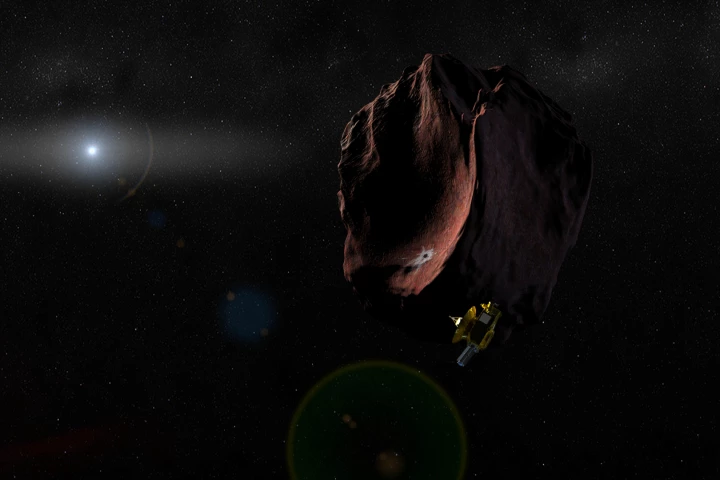Kuiper Belt
-
The New Horizons spacecraft is just a few weeks out from a historic flyby of the Kuiper Belt object, 2014 MU69 (Ultima Thule). After weeks of scans for any potential hazards, NASA has now given the all-clear to buzz the object on an optimal path, which will bring it in closer for a much better look.
-
Mission control rejoiced when NASA’s New Horizons probe zipped past Pluto in 2015 following a nine-year voyage, but in some ways it was just getting started. After gathering data on the dwarf planet, the plucky spacecraft’s imager has now made its first detection of its next flyby target.
-
NASA’s New Horizons spacecraft has successfully awoken from a planned 165-day hibernation period ahead of its historic flyby of the Kuiper Belt object Ultima Thule, which is set to take place on New Year’s Day 2019.
-
NASA's New Horizons spacecraft has returned some magnificent images of the Solar System's outer reaches around Pluto, its primary target. Its latest snaps may not be its most spectacular, but are pioneering in their own way as the farthest images ever snapped away from the Earth.
-
In less than 17 months NASA’s New Horizons spacecraft will make a close proximity pass of the ancient Kuiper belt object (KBO) 2014 MU69. In preparation for the pass, a team of scientists has completed an ambitious set of observations that have shed light on the possible shapes of the KBO.
-
Using statistical computer analysis, astronomers from Western University have reconstructed the orbit of comet 67P/Churyumov-Gerasimenko and say that it's a recent visitor to the inner Solar system from the Kuiper Belt.
-
It's been over a year since new Horizon's flyby of Pluto in July 2015, but it continues to send back data from that brief encounter. Evidence from the probe indicates the dwarf planet may have clouds and that its next destination may be more like Pluto than previously thought.
-
Astronomers have witnessed the beginning of the end of an ancient comet. After billions of years, Comet 332P may only have 150 years left, as Hubble captured images of it throwing off dozens of building-sized pieces. The observation is helping scientists learn about the life and death of comets.
-
If you grew up knowing that there were nine planets orbiting our sun and were a bit crushed when Pluto lost its status, there might be new hope for a nine-pack, as researchers are again putting forth the idea that a planet might be lurking somewhere out there on the fringes of our Solar System.
-
A new dwarf planet has been identified on the fringes of our solar system. Designated 2015 RR245, the object’s size isn’t known just yet, but its discoverers estimate it to have a diameter of 700 km (435 miles) and one of the largest orbits of a dwarf planet, circling the Sun once every 700 years.
-
A team of astronomers has announced the discovery of a new moon located in the far reaches of our Solar System, orbiting the little-known dwarf planet Makemake.
-
NASA's New Horizons spacecraft has achieved a lot, recently sending home a wealth of information on Pluto, including stunning close up imagery and and a breathtaking view of its crescent. Now, the probe has completed the last of four burns that have put it on a path to an uncertain future.
Load More











